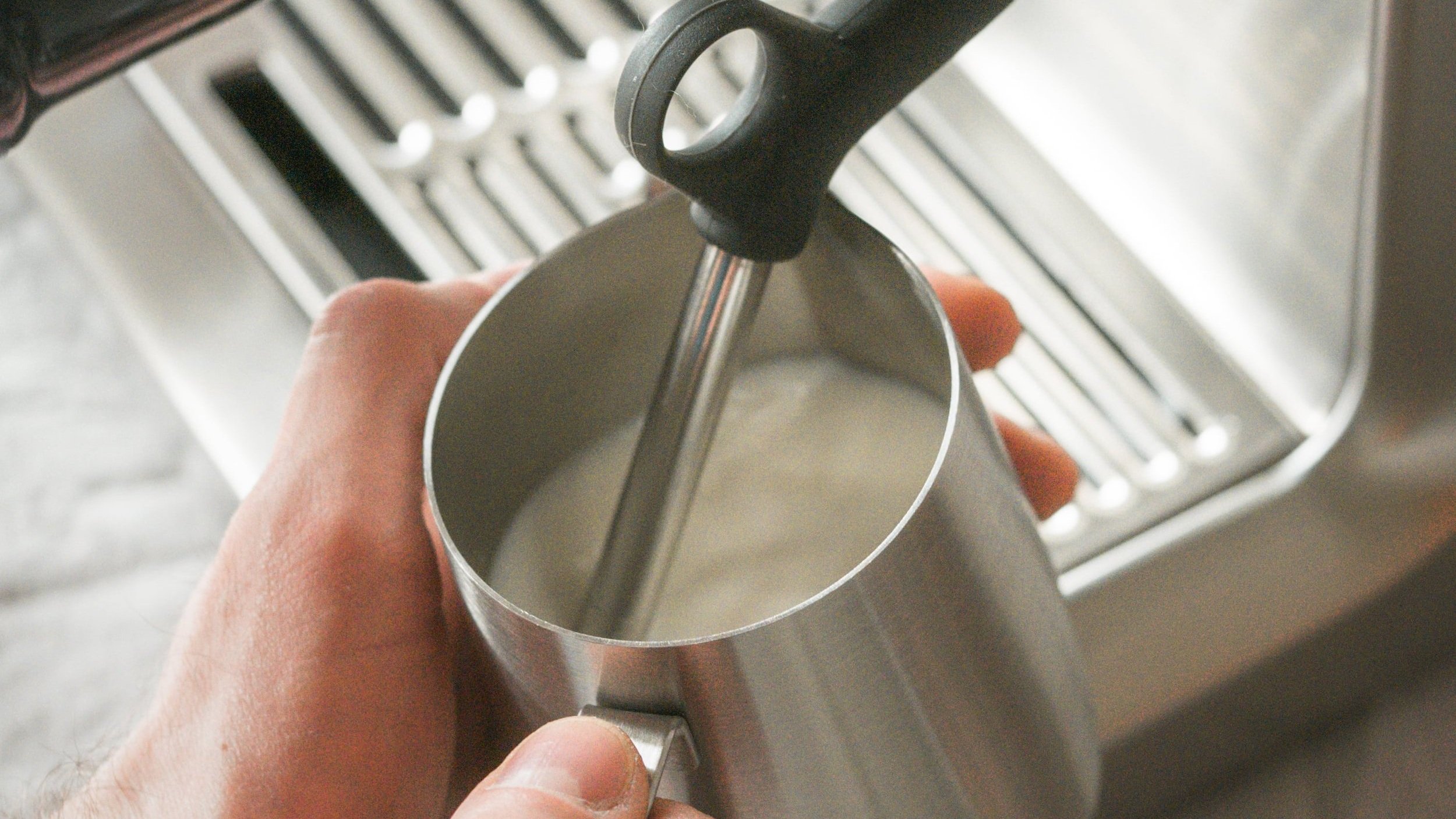Steaming milk might seem tricky at first, but with practice, it can enhance your coffee-making skills and elevate your drinks. Whether you're crafting a latte or cappuccino, learning to steam milk properly is essential for achieving barista-quality results. Here’s a step-by-step guide based on my experience using the Breville Barista Express. Discover the advanced features and performance of this machine in our Breville Dual Boiler BES920XL review

Why Steaming Milk Matters
Steamed milk is more than just hot milk. It creates microfoam, which is crucial for a smooth, velvety texture. The tiny, uniform bubbles enhance both the taste and presentation of espresso drinks by complementing the boldness of the coffee with creamy, sweet milk. Perfectly steamed milk ensures a balanced flavor experience. Learn about the ease of use and innovation in our Breville Barista Touch Impress review
Preparing the Breville Barista Express for Steaming
Before starting, ensure your machine is fully warmed up. The Breville will indicate readiness when the steam button is illuminated. Don’t forget to purge the steam wand briefly to clear out any water buildup—this step helps achieve clean, high-quality steam. Compare these two popular models in our Breville Barista Express Impress vs Pro review
Preparing the Milk
For the best results, fill a milk jug one-third full with cold milk. Cold milk gives you more time to create the perfect texture. Whole milk creates the richest foam, but you can use plant-based options, such as oat or almond, as long as they’re barista-grade. Find out which machine suits you better in our Breville Barista Pro vs Express review
Positioning the Steam Wand
Insert the steam wand just below the milk’s surface at a slight angle (15-20 degrees). The tip should stay near the surface to pull in air and create foam. For optimal results, aim to create a vortex in the milk by positioning the wand near the jug’s edge. This will help smooth out larger bubbles and create silky microfoam. Explore the key differences between these premium machines in our Breville Oracle vs Oracle Touch review
Steaming the Milk
Start the steam by turning the knob, listening for a gentle hissing sound as air is introduced. After about 5-10 seconds, lower the jug slightly so the wand is submerged, allowing the milk to heat evenly. Keep an eye on the swirling motion of the milk, which indicates you’re achieving the correct texture. Discover the advanced features and performance of this machine in our Breville Dual Boiler BES920XL review
Steaming typically takes 20-30 seconds. If using a thermometer, aim for 150°F (65°C). Alternatively, use the touch method: once the jug becomes too hot to hold for more than a few seconds, the milk is ready. Learn about the ease of use and innovation in our Breville Barista Touch Impress review
Finishing the Process
Once steamed, turn off the steam and wipe the wand with a damp cloth. Purge the wand again briefly to remove any trapped milk. Tap the jug lightly on the counter to eliminate large bubbles, and swirl the milk for a velvety, glossy texture. Compare these two popular models in our Breville Barista Express Impress vs Pro review

Pouring the Steamed Milk
When pouring, start with the jug close to the cup. Pour slowly, then gradually raise the jug and increase the speed to let the foam settle on top. This method gives your drink a perfect foam finish and sets the stage for latte art if you’re feeling creative. Find out which machine suits you better in our Breville Barista Pro vs Express review
Troubleshooting Common Issues
- Milk not frothing: Ensure you're using cold, whole milk, and position the wand just below the surface for proper aeration.
- Large bubbles: Incorporating too much air at the start can cause this. Keep the wand's tip just below the surface for controlled frothing.
- Milk overheating: Monitor the temperature with a thermometer or by touch to avoid scorching. Milk should be around 150°F (65°C).
Conclusion
Mastering milk steaming on the Breville Barista Express takes practice, but once you get the hang of it, you’ll be making cafe-quality drinks at home. Focus on controlling the air and heat to create smooth, glossy microfoam. With a little patience, you’ll elevate your coffee experience to new heights. Explore the key differences between these premium machines in our Breville Oracle vs Oracle Touch review
